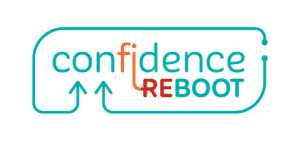
In today’s fast-paced professional world, the way we communicate goes beyond just words. As a life coach, I’ve seen countless individuals enhance their workplace interactions simply by understanding and harnessing the power of body language.
Let’s explore this silent yet profound form of communication that can make or break our professional relationships.
Table of Contents
The Profound Impact of Body Language
Imagine walking into a meeting room, and before a single word is spoken, you sense tension in the air. It’s not magic; it’s the silent language of postures, glances, and subtle movements.
Body language can influence perceptions, set the tone for interactions, and even determine the outcome of a discussion.
Body language acts as a mirror, reflecting our emotions, intentions, and sometimes even our hidden thoughts.
For instance, during one of my coaching sessions, a client named Sarah shared how she clinched a deal without uttering many words.
Her confident posture, steady eye contact, and genuine smile made her clients feel at ease, establishing trust even before the negotiations began.
Key Elements of Body Language
Posture
Standing tall isn’t just about height; it’s about confidence and presence. A straight posture indicates attentiveness and interest.
On the other hand, slouching can be perceived as disinterest or lack of confidence.
Eye Contact
Eyes are often called the windows to the soul. Maintaining steady eye contact signifies trustworthiness and attentiveness.
However, constantly avoiding eye contact can be seen as evasiveness or lack of confidence.
Facial Expressions
A smile can warm up a room, while a frown can do the opposite. Our face conveys a myriad of emotions, often more accurately than words.
Being aware of our facial expressions ensures our emotions align with our message.
Hand Gestures
From a firm handshake to a friendly wave, our hands add emphasis to our words.
However, excessive or erratic hand movements can be distracting and may convey nervousness.
Body Orientation
Our body direction can indicate our level of interest and engagement.
For instance, turning our body towards someone signifies interest, while turning away might indicate disengagement or discomfort.
Harnessing the Power of Body Language
Being aware of our body language and understanding its impact is the first step towards mastering this silent communicator.
Here are some strategies:
- Self-awareness: Regularly check in with yourself. Are your non-verbal cues aligning with your words? During a workshop, I noticed a participant named Jake constantly crossing his arms. When asked, he mentioned it was just a comfortable position for him. However, to others, it might appear defensive or closed off.
- Observing Others: Pay attention to the body language of colleagues and peers. It can provide insights into their feelings and thoughts, allowing for better communication.
- Mirroring and Matching: This is a technique where you subtly reflect another person’s body language. It’s a way to build rapport and show empathy. For example, if someone leans forward while talking, you can do the same to show you’re engaged.
- Projecting Confidence: Even if you’re nervous, adopting confident body language can not only make you appear more confident but can actually make you feel more confident.
The Role of Body Language in Diverse Workplaces
In our globalized world, workplaces are becoming increasingly diverse. This brings a rich tapestry of cultural nuances, especially in body language.
For example, in some cultures, direct eye contact might be seen as confrontational, while in others, it’s a sign of respect.
Understanding these nuances and being adaptable is crucial. It ensures that our non-verbal cues resonate with diverse audiences, fostering better communication and understanding.
Challenges and Misinterpretations
Body language isn’t a one-size-fits-all. What might be a sign of agreement in one culture might indicate disagreement in another.
It’s essential to understand the context and avoid jumping to conclusions based solely on non-verbal cues.
For instance, during a seminar in Japan, I noticed participants avoiding direct eye contact. Initially, it felt like disinterest. However, I later learned that it was a sign of respect.
Such experiences highlight the importance of understanding and adapting to different cultural contexts.
Personal Account: The Silent Lesson
Early in my career, I attended a conference with professionals from around the world.
During a group discussion, I noticed a participant named Ravi, who spoke little but his body language was loud and clear. His attentive posture, nodding, and eye contact made everyone feel heard and valued.
It was a lesson in how powerful body language can be, even without uttering a word. That day, Ravi’s silent communication taught me more than any spoken presentation.
In the realm of professional interactions, understanding the silent communicator – our body language – can be a game-changer. It’s not just about what we say, but how we non-verbally convey it.
By mastering this art, we can enhance our workplace interactions, build stronger relationships, and pave the way for success.
